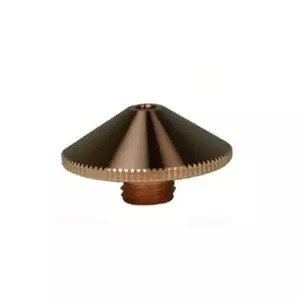Any manufacturing industry has multiple ways to find a solution for one particular job. This is true when it comes to cutting raw materials. There are two popular methods that you might find in many shops, i.e., water jets and plasma cutter.
Both the machines are known for their ability to quickly and easily cut certain materials. But, like every machine, these two machines also have something different in them.
A brief about how water jet cut machine works:
A water jet is a cutting system that relies on a mixture of water and breaks down materials along a given path. You can assume it as a high-speed erosion. The abrasive feeds through a line into a mixing tube where it meets the water source and sprays out with immense pressure. It puts more than 50,000 psi and forms a cutting stream at the tip of a ceramic nozzle, which then moves along a path determined by the associated CNC software. It works at a speed that varies depending on the type of material and its thickness.
Now, let’s talk about working of plasma cutting:
Plasma cutters use gas and electricity. The gas forces through the constricted opening at high pressure at a point that it contacts an electric arc that passes through a nozzle causing a reaction, and the gas heats to the degree that it enters the fourth state of matter plasma. The plasma is hot enough to melt through the high enough speed that excess material blows away, resulting in a relatively clean cut. Make sure to use Hypertherm parts online, esab plasma cutter parts as they are easy to replace and help you have a precise cut.
You can use different gases depending on material type and thickness.
In this article, let’s explore the differences between the water jet cut and plasma cutting:
1. Quality:
The plasma cutter smoothly cuts many steels with an accuracy of +/- .01″- 0.30″ “depending on the setup. When the material thickness increases, the cut will be less clean as the plasma struggles to melt through all the materials without producing unwanted slag.
The water jet is a more accurate machine and will produce high-quality cuts across a wide range of materials and thicknesses. The water jet can hold a tolerance of +/- .005″ and has additional accessories available. They can further increase the accuracy of minimizing taper. The speed can adjust to improve surface finish and often eliminates any need for secondary machining.
2. Maintenance:
The water jet requires constant maintenance. Water jet parts are under constant pressure, and so the failure rate is very high. Replacement parts and rebuild kits are necessary and expensive. The water jet tank can also be pumped out regularly as it fills with abrasive over time. Some shops outfit their machines with costly waste management systems. Whereas others rely on vactor trucks or shovel out the excess to garnet them.
On the other hand, plasma cutting needs less maintenance except for gas that we need to operate; fewer consumables and components can break down. Preventive maintenance becomes the key to uninterrupted plasma production. This helps in proper cleaning and alignment of essential items; you need to check this on the basis of performance.
3. Materials:
Plasma cutters have a limitation in what materials it can cut. They are mostly useful for steel though certain materials can cut stainless and aluminum with a proper setup. Conductive materials do not cut well on plasma.
Thickness of the material also plays a major role in plasma’s cutting capabilities. The quality will begin to go on anything ½” “in thickness.
Whereas, you can use a water jet to cut any material type. Be it hardened steels to softer materials like wood, plastic, or even food items like bread or cake. The water jet material can cut up to 10″ “thick steel as the thickness does not limit it.
Conclusion:
While choosing the correct cutting material for your business, it’s important to know the major difference between both of them and choose the best out of them. Hence, make sure before purchasing any of them you know the major difference between each of them. Try to use plasma cutting machines which have hypertherm parts online, esab plasma cutter parts.





